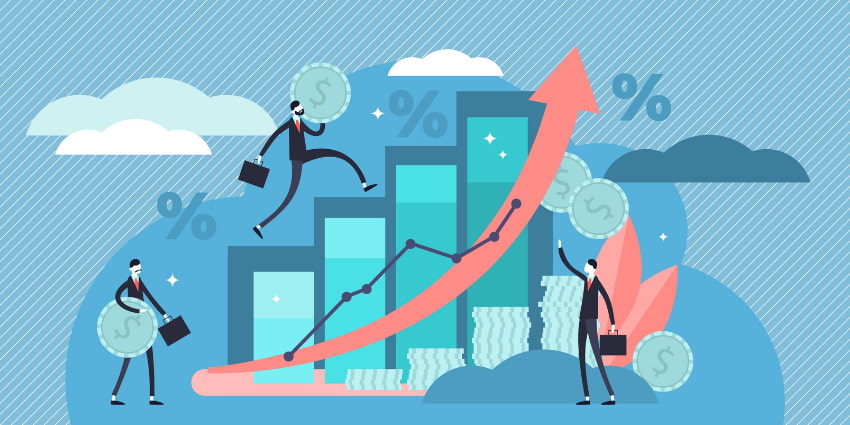The ability to accurately predict prospect behaviour and sales likelihood can be a game-changer for your organisation. According to a case study by McKinsey, a manufacturer was able to reduce inventories and product obsolescence by up to 40% while increasing sales by 5% by acting on sales forecasting insights. In the mid-term, companies can gather more knowledge on product demand and diversify into targeted categories/regions in the long term by keeping an eye on regular sales forecasts. This is achieved by anticipating future events accurately and preparing beforehand.
To understand how sales forecasting works and the use cases for applying it in your organisation, let us first understand the meaning of this term in more detail.
What is Sales Forecasting?
You can define sales forecasting as the process of predicting future sales events – such as the likelihood of conversion, estimated revenue generation, and salesperson performance – by studying historical event patterns and factoring in conditional data. Sales forecasts are different from sales planning because the former is quantified and actionable while the latter refers to the actions taken as a result of the forecast findings.
Typically, sales forecasts aim to capture predictive data for a specific prospect (an individual, a company, an existing customer, or an entire region), which is to be converted or won by a sales representative (again, an individual, a business unit, a sales channel, or an entire company).
In other words, the purpose of sales forecasting is to give you tomorrow’s sales numbers today with impressive accuracy.
Are Sales Forecasts Accurate?
While sales forecasting is very rarely 100% accurate, its findings give you reliable guidance on future actions. To take a simple example, a sales forecast might indicate potential sales demand for product X in market region Y based on previous purchase histories, macroeconomic factors, and new demographic data. If you ramp up manufacturing capabilities in Y accordingly, you are likely to sell a substantial number of X products even if you cannot clear off 100% of inventory.
Sales forecasting technologies that use AI, Big Data, advanced data science algorithms, and smart visualisations can augment these benefits. Tools like Salesforce, Oracle CX Sales, Pipedrive, InsightSquared, etc., can parse thousands of variables to give you a customised, highly contextualised prediction.
6 Key Sales Forecasting Use Cases
- Allocate stock and inventory based on predictive demands
- Define long-term budgeting based on specific business unit sales
- Set optimal workforce schedules to align production with demand
- Balance supply with demand in shirt and mid-terms, to reduce waste
- Train and assign sales development representatives based on predictive performance
- Prioritise leads and prospects based on likelihood to convert
Methodologies for Sales Forecasting
The crux of sales forecasting – whether AI-enabled or legacy – is the statistical algorithm and methodology you use. There are several ways to go about this: for example, you might want to analyse specific and average leads to derive sale potential. Forecasting the length of the sales cycle, the likelihood to convert at different stages (initial call, product demo, trial, etc.) and demand/purchase patterns for a new market region are some of the other approaches.







